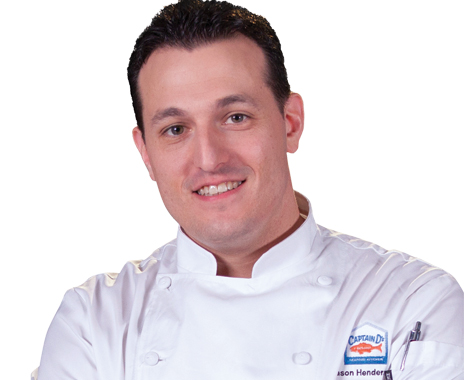What is Captain D’s working on in menu development today?
We’ve been around a long time; the company was founded in 1969. For much of that time, we were a batter-and-breading house. The fish and chips has been and still is our No. 1 selling item. The grill is probably the biggest news for us in terms of a whole platform of additions—not just in terms of a grilled piece of fish, but in terms of the full flavor offering that we can get off the grill. We’re working on our second year now creating the same high-quality grilled recipes the same way. We’ve added 10 percent incremental sales to the system. We had 25 percent growth last year on the mixed grill, and we’re expecting somewhere in that vicinity this year.
It’s not to say we don’t push the envelope. We look at other things like lobster rolls, tacos, and what’s happening on the food trucks as well.
What are some innovative flavor profiles that work well with seafood?
What we hear from our guests many times is the classics. Cajun is still really big. Anytime we tiptoe toward the Creole and the Cajun and the blackened flavors, those do very well. Lemon pepper is so classic with seafood. It still excites people. People want to say, “Oh, that’s yesterday,” but we still get great response from lemon pepper and things like garlic and herb. We’ve got this new seasoning that’s kind of a garlic-and-herb profile that we call Tuscan. We’ve got a Tuscan-seasoned tilapia that we’re really excited about. It’s probably gotten a better response in terms of taste testing than many of the seasoning profiles we’ve done on tilapia.
We’re constantly on the lookout for new flavors. We’ve seen some successes with glazes, as well. Teriyaki and bourbon are two glazes we’ve done well with. We’ve even looked at and had some success in testing things like cola glazes on fish.
What are the best kinds of seafood to serve in a limited-service environment and why?
We do a mix of wild-caught and farm-raised fish. I’m a big fan of farm-raising. It helps create sustainability in our fisheries. Tilapia is a good example. When I began several years back at Applebee’s, it was one of the first multiunit brands to bring tilapia to the mainstream. A lot of people didn’t know what that was, and they tried it very apprehensively. Now everybody knows what tilapia is; they probably even pick it up at their supermarket and try their hand cooking it at home, and that allows it to become more affordable for everybody when it hits the ubiquitous stage. We take something like tilapia that you know and love, and provide it to our guests at a value, and then we create great flavors.
There’s some up-and-coming fish species. Many of these are becoming more prolific in the farm-raised fisheries. Trout is one; barramundi is something that you see when you see who’s farm-raising and who’s creating a good supply of fish. We have those in our pipeline. We haven’t offered them system-wide yet, but those are species that we’re looking at.
How do you innovate in seafood?
A lot of times it’s about mitigating the risk. And we do that by either taking that known protein and putting that new flavor on it or vice versa. You’ve got a new protein that you want to try—let’s say if we were going to bring in the trout or barramundi—and we would pair that with whatever best matches that protein. The other thing we do in seafood many times is combination plates. Shrimp is pretty magical for us. You put some shrimp on any plate and it’s going to get some excitement. This helps new customers to try new things if they know part of the meal is something that they’re familiar with.
How important is sourcing when it comes to seafood development?
It’s huge. We have a great partnership with our purchasing department, supply chain, and suppliers. They are part of some of the largest voices and associations of seafood purchasing in the world. They keep their finger on the pulse of commodities. They know a year or more in advance about what the forecasts are for catches. We need to know where to put our foot down on the gas. There have been years when we used all farm-raised catfish. If you get a really hot summer or something else that affects what they’re pulling out of the ponds, it can affect your catch. We’ve got to know where to emphasize what protein we use on the menu, and our purchasing department helps us do that.
What’s on the horizon?
We’re getting ready to do a Parmesan-crusted tilapia. It’s very indulgent. The grill has also allowed us to create a variety of options, including health and wellness options. At the same time, if you come in and you want gluten-free or less sodium, it’s given us levers to pull to really meet a lot of different needs.>











